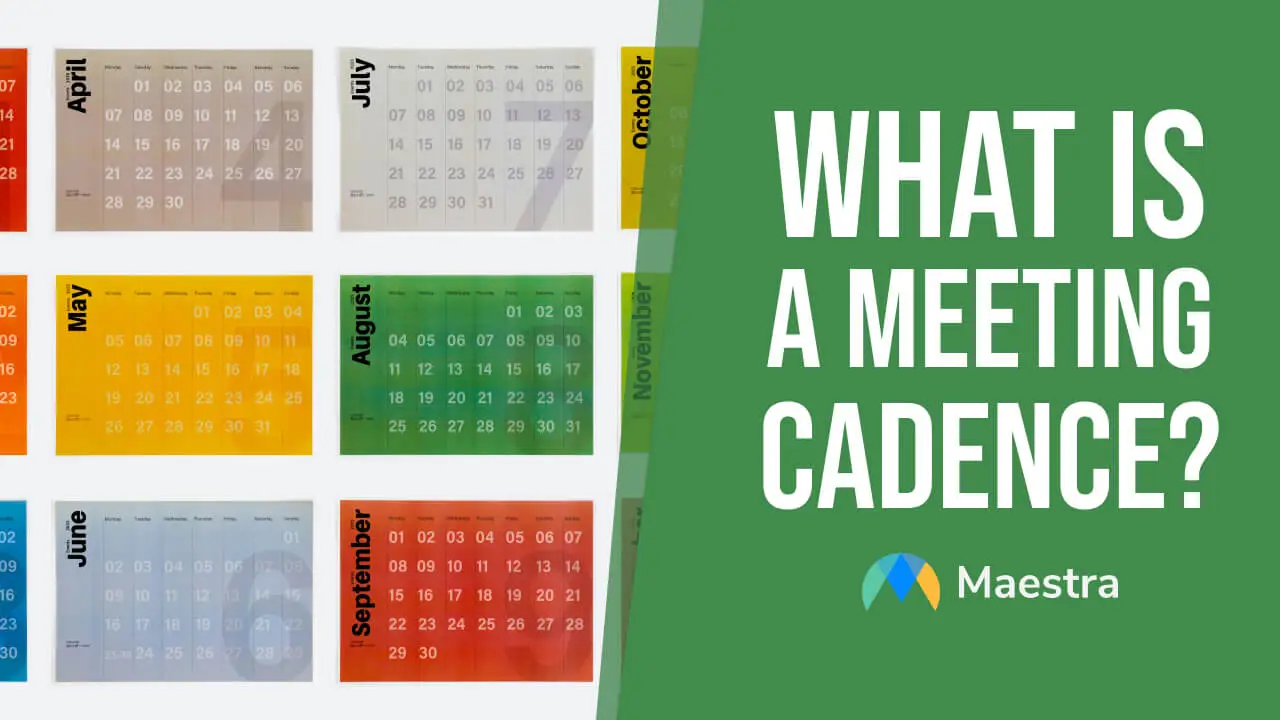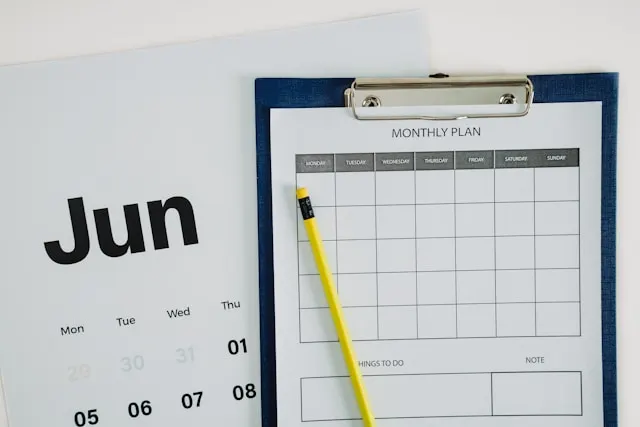What Is a Meeting Cadence? Tips for Setting the Best One

We’ve all experienced that dreadful moment when an unnecessary meeting invite drops into your inbox. It disrupts your focus, wastes precious time, and drains your energy. That’s why it’s crucial for teams to establish a purposeful meeting cadence; one that occurs at the right frequency and prioritizes what really matters.
In this blog, we will:
- Explain what a meeting cadence is, highlighting its common types and benefits
- Share how to set an effective meeting cadence in 3 steps
- List 6 best practices for choosing the right meeting cadence
Let’s get started.
What is a meeting cadence?
A meeting cadence is the frequency at which meetings are scheduled within a team or organization. This frequency is typically based on the nature of the work, the size of the team, or project deadlines.

While some teams may benefit from daily standups, others may find bi-weekly or weekly meetings more efficient. Ultimately, the goal is to establish a rhythm that works for the whole team, ensuring that members remain connected, accountable, and aligned on objectives.
Common Types of Meeting Cadence
The following table outlines various meeting cadence and their purpose, which can help you choose the right frequency for your team.
| Type of Meeting Cadence | Frequency | Purpose |
|---|---|---|
| 🗓️ Daily | Every day | Quick standups or huddles to keep the team aligned with status updates. |
| 📅 Weekly | Once a week | Regular updates to track progress, resolve blockers, and plan for the week ahead. |
| 🔄 Bi-weekly | Every two weeks | Meetings to track progress, discuss deeper issues, and make adjustments for long-term projects. |
| 🗓️ Monthly | Once a month | Meetings for long-term strategic planning or performance reviews. |
| 📊 Quarterly | Every three months | High-level reviews of goals and progress, strategic adjustments. |
| 🎯 Semi-annual | Twice a year | Biannual review of major goals, strategic direction, and key achievements. |
| 🎯 Yearly | Once a year | Annual in-depth reviews for long-term goals, performance, and strategy. |
| 🚨 Ad-hoc | As needed | On-demand meetings for immediate needs or urgent issues. |
Transcribe Your Meetings for No Worries
5 Benefits of Setting a Meeting Cadence
From improved decision-making to systematized project management, there are several benefits of setting a meeting cadence.

How to Set Up the Right Meeting Cadence for Your Team
This process involves three main steps: knowing what your team needs, going through a trial period, and finalizing the cadence calendar.
1. Identify Your Team’s Needs
Begin by analyzing the type of meeting your team requires. Ask yourself the following question:
What challenges or topics should we address with recurring meetings? Do we need to share daily updates, solve problems, plan for long-term success, or review performances?
The ideal meeting cadence depends on the goals and time requirements of each meeting type. For example:
2. Try It Out First
Once you’ve decided on the meeting cadence, implement it on a trial basis.
3. Communicate the Final Cadence
After the trial period, analyze your observations, gather feedback from the team, and fine-tune the meeting cadence to maximize the value of each meeting.
Tip: You can use a meeting cadence template to outline the frequency and purpose of various regular meetings.

6 Best Practices for Choosing a Meeting Cadence
Choosing the right meeting cadence is much more than setting a schedule; it’s about finding the rhythm that works for everyone. These best practices will guide you in creating a routine that supports productivity and team wellbeing at the same time.

Frequently Asked Questions
What does cadence mean at work?
Cadence meaning in business refers to the rhythm and timing of key activities, such as meetings and deliverables. It helps establish a predictive flow of tasks and processes. With a steady cadence, teams can maintain momentum and effective communication.
What is an example of a meeting cadence?
A meeting cadence example can be a daily standup meeting, where team members briefly discuss their priorities for the day. Another example is a monthly leadership meeting, where senior management reviews company performance and sets strategic goals. Quarterly business reviews are also an example, serving as a critical touchpoint for evaluating growth.
What is a project meeting cadence?
A project meeting cadence refers to the frequency and schedule of recurring meetings that help track progress. This can include weekly or biweekly meetings to discuss updates and challenges in the project lifecycle. Sprint reviews are also a part of this cadence, where the team evaluates the work completed and plans next steps.
How do you present a meeting cadence?
A meeting cadence can be clearly presented with a meeting cadence template. This template should outline the frequency, timing, and structure of each recurring meeting. It will help your team stay organized and demonstrate that every meeting serves a specific purpose.
Does Excel have a scheduling template?
Excel does not have a specific meeting cadence template. However, you can use one of its free schedule templates and customize it to create a cadence template. Feel free to adjust the columns and rows to include meeting frequencies, dates, and notes that fit your team’s needs.
Summary
This blog guided you through the steps on how to set the right meeting cadence for your team. It also shared 6 best practices, which can help you establish a rhythm that ensures your meetings are purposeful and in sync with your team’s needs.
Here are our three golden rules to follow when setting a meeting cadence:
- Consider how your team works, taking into account factors such as time zones, location, and the overall workflow dynamics.
- Implement a trial period to test the effectiveness of your chosen meeting cadence and identify any necessary adjustments.
- Gather feedback from team members to foster a sense of ownership and improve the overall meeting experience.
With these tips in mind, you can transform regular meetings from tedious obligations to structured sessions that drive results.

